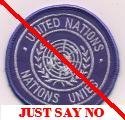DDT and Malaria
By LARRY J. SCHWEIGERAs the nation commemorates pioneer conservationist Rachel Carson's 100th birthday, we should reflect on the relevance of her career to the overriding environmental challenges of our own time. In an article she wrote in 1938 following her attendance at a National Wildlife Federation convention, Rachel reminded us that "wildlife … is dwindling because its home is being destroyed. But the home of wildlife is also our home." Somehow too many of us have lost sight of this basic tenet.
Rachel understood the direct cause-and-effect relationship between man's conservation stewardship and the vitality of all living creatures. Despite her warnings about the need to nurture this delicate relationship, many in our country, both then and now, didn't listen to Rachel's admonitions.
Most remember Rachel Carson for her famous book "Silent Spring"; however, our collective memory of Rachel's contribution must be re-examined in light of her early warnings about global warming.
"WHEN Rachel Carson’s Silent Spring was published in 1962, a small group of scientists pointed out its errors. Some of them were so egregious that even a nonspecialist would have spotted them if not at once, then after a moment of reflection."
Rachel Carson's legacy
BY Rony V. Diaz
The majority of her readers, however, took her book for revealed truth and were almost instantly converted to her vision of militant environmentalism.
Her political program was clear in “Fable for Tomorrow,” the initial chapter. “There was once a town in the heart of America where all life seemed to live in harmony with its surroundings. . .” Then one day a “strange blight,” an “evil spell” killed all plants and animals and sickened all humans. This contagion “silenced the rebirth of new life.”
The cause of this apocalypse was the synthetic contact insecticide DDT, a compound that entered the tissues of both prey and predator, as well as their food chains. DDT, she claimed, was also the cause of cancer and foresaw an “epidemic of cancer” sweeping the world. It did not happen.
There is a couple of things you should know about DDT .... well actually 100 things you should know about DDT . Also, an expert on malaria wants DDT back because "the battle to combat this killer disease, which affects nearly six million people annually in Malawi, can only be won if DDT is used to kill mosquitoes." A country in southeastern Africa, Malawi is approximately the size of Pennsylvania.
"The mosquito-borne illness claims the lives of 3,000 children daily and more than one million each year—the majority in sub-Saharan Africa. In Uganda alone, reports indicate that more than ten million are infected and up to 100,000 mothers and children die from the disease each year."
Give Us DDT
By SAM ZARAMBA
The United States and Europe eradicated malaria by 1960, largely with the use of DDT. At the time, Uganda tested the pesticide in the Kanungu district and reduced malaria by 98%. Despite this success, we lacked the resources to sustain the program. Rather than partner with us to improve our public health infrastructure, however, foreign donors blanched. They used Africa's lack of infrastructure to justify not investing in it.
Today, every single Ugandan still remains at risk. Over 10 million Ugandans are infected each year, and up to 100,000 of our mothers and children die from the disease. Recently Ugandan country music star Job Paul Kafeero died of the disease, a reminder that no one is beyond its reach. Yet, many still argue that Africa's poor infrastructure makes indoor spraying too costly and complex a means of fighting malaria.
"The ban of DDT by the EPA caused many other countries to follow suit and discontinue use of DDT as a method for malarial control."
The Legacy of the DDT Ban, the Legacy of Rachel Carson
AMERICAN COUNCIL ON SCIENCE AND HEALTH
By Patricia Ludwig
The ban was supported by many aid agencies such as USAID, the WHO, the Norwegian Development Agency, and the Swedish Aid Agency, which contributed a large portion of public health aid to poor nations. These countries, dependent on aid, could not continue to use DDT after the ban. Many countries also stopped using DDT for fear that European countries would refuse to buy their agricultural exports. The ban on DDT thwarted progress in the eradication of malaria. In South Africa, DDT was phased out in 1996, causing malaria cases to increase from 12,500 in 1995 to 50,000 in 1999. However, cases dropped by 80% in 2000 in KwaZuluNatal, the one province in South Africa that began using DDT extensively again. Though DDT need not be used on everything as it was in the 1950s and 1960s, its judicious use is clearly effective in controlling malaria.
To replace DDT, many countries such as South Africa began using synthetic pyrethoids to kill malarial mosquitoes. The problem with these substitutes is that they are more expensive and less effective. In addition, A. funestrus, a malaria-transmitter mosquito that feeds almost exclusively on humans, has developed resistance to pyrethroids. In the 1950s, it had almost disappeared from South Africa. It began to reappear in the 1990s, which correlates with the removal of DDT."



































0 Comments:
Post a Comment
<< Home